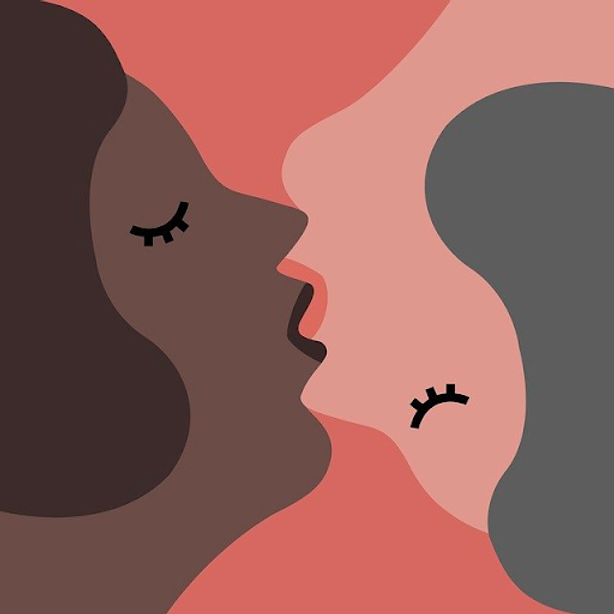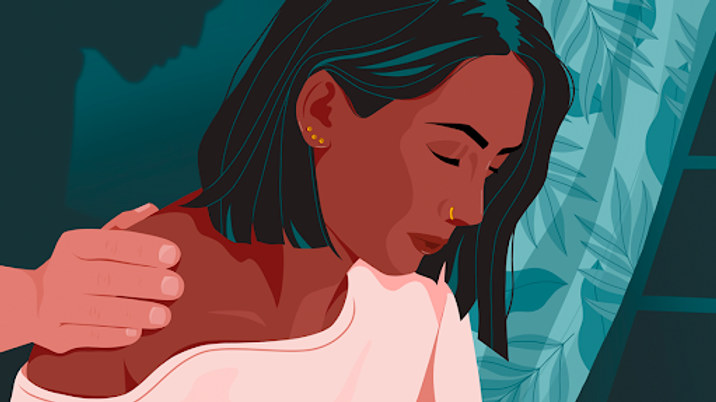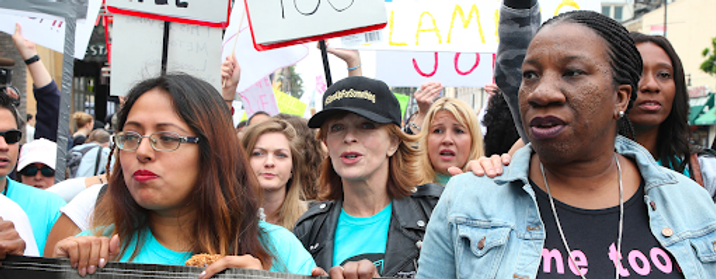I read The Purity Myth years ago. Sometime between the ages of 16 and 19, Jessica Valenti put a name to the not-so-distant phenomenon I recognised growing up. The connotations surrounding virtue, goodness and cleanliness were pedestalized amongst the sinful and dirty nature of all things sex-related. In trying so hard to steer young women on the righteous path, we were never taught of the safety, health and care that should surround sex and sexual interactions.
The topic of consent wades in and out of conversations like online dating topics. What is consent, what counts as consent, and is there any wiggle room in between? The language of consent is hidden, disguised as having no place in conversations about dating, personhood and personal boundaries beyond the sexual. Like a dirty word, it awakens something almost scary as it dares people to consider what it means to act with consent in our everyday lives.
I continue to think about consent– the ways in which it’s taught but mostly the way it isn’t. There is eerie intentionality in not honing in on the importance of autonomy. In shying away from this, there is a failure to discuss situations where consent should be present and the boundaries that exist within and around that. Here we are in a continuous cycle that fails Black women, young girls and those at the intersections of various gender and sexual identities.

For many of us, consent is sandwiched uncomfortably between religious practices and cultures that thrive on virginal purity. It is a quiet but oft-held notion that consent is an indictment of sex. Probably because we only discuss consent within the realms of sexual interactions and not the way it applies to our everyday reactions.
This failure to teach consent plays into the belief that sex plagues everything and everyone, which feeds into a dangerous precedent that consent [read: sex] opens the door to a myriad of sins for the unmarried. To teach consent, then, is to encourage premarital sex.
Ironically, in the marital circles and purity culture classes that define the parameters of what an approved sexual relationship should be, consent also seems to be missing. This creates a power imbalance. Consent gives voice to the uncomfortable familial, communal and societal situations many experience.
Teaching people they have the right to say no would mean confronting and calling out those that infringe on personal autonomy and violate in more ways than one– a far stretch for persons constantly policed, surveilled and should know their place. So, it takes a back seat until your mid-teenage years.
If you’re lucky, you’ll watch the consent, simple as tea video. A visual analogy of consent in terms of something simple; making tea. This is meant to be a base, a starting point to know you have a choice. Despite being clear and simple in its depiction of consent, we still have a long way to go in showing how far and wide your choice goes and how many people have that choice.
Consent may be as simple as tea, but we love technicalities and loopholes, rebuttals that echo from people that don’t like tea, who prefer coffee and other hot drinks; people who understand but will deliberately counter simplicity with offerings of other analogies and devil’s advocate arguments to test the ways in which consent should not be simple.
The truth remains though, that consent is necessary and it’s not enough to teach the bare minimum because it leaves blank spaces and cracks for people to make excuses
Nonetheless, even with this, not everybody gets the opportunity to witness that. Sex education in learning and workplace institutions (if that) is in shambles. Many with religious upbringings will recall being accosted by religious teachings and school bodies about the importance of the virtuous woman made ready for the deserving man. The singularity of teaching follows the ways you shouldn’t get pregnant, the importance of self [read: bodily] preservation for the man worthy of it all. There is a binary in place for those lucky enough to be born in the right bodies and attracted to the right type of people.
As you grow up, you might learn about alcohol and drugs, maybe even the threat of violence. They’ll tell you no means no or glitz it up in fun ways like consent is sexy. The truth remains though, that consent is necessary and it’s not enough to teach the bare minimum because it leaves blank spaces and cracks for people to make excuses, such as people consenting under unfavourable circumstances. These include intoxicating substances, fear and discomfort or more simply, guilt-tripping and efforts to wear the other party down. These excuses create a narrative that consent to one thing is applicable to any and everything. More importantly, it suggests that consent is something owed, or a yes can be indicated (verbally or physically), irrespective of the circumstances in which they took place.
The conversation around consent and the violation of this then targets the type of person or people involved in these scenarios, i.e. if the ‘wrong’ sort of person changes their mind. These supposed grey areas exist largely because of entitlement and dare I say it, the humiliation experienced by someone expressing their autonomy when one party deems they shouldn’t. We continue to fail at effectively teaching consent because, despite all the focus on what you shouldn’t do to avoid ‘sticky’ situations, there’s still a large amount of information that’s withheld.
They don’t tell you that you can change your mind, that your feelings of safety should be of utmost importance, that persistence is not cute. They won’t tell you that even with seemingly non-traditional relationships, consent still has a place. They will omit a discussion about power dynamics or the ways people lie. Most importantly, they won’t tell you how ready and easily people will blame you if you tell the truth.

And so it continues. A failing game that teaches shame. A hardened culture of purity that awards blame, diminished value and worth on the intactness of your hymen and disregards you as ‘other’ for existing outside the established narrative of womanhood and identity.
It refuses to acknowledge the ways in which they’ve contributed to that shame. That telling you you won’t form genuine connections and relationships doesn’t create a space for vocal discussions and acceptance. That saying you just might go to hell, strangely enough, does not foster good discussions. In this shroud of shame, there is no opportunity to vocalise the way you feel, the trauma you might have endured already because of fear of being rejected or having your truth thrown back at you.
They will talk about the ways in which you said yes, never mind the conditions that led to that. You will learn a little too late that consent was never about your safety but your perceived worth. It lends itself to a pattern of blaming one person for the poor behaviours of another.
The onus continues to be a one-sided blame game of how to make better choices by picking the right men and wearing the right clothes that render your legs shut and closed for business. A game that assumes womanhood is solely one thing and looks a certain way and to be anything else is to be other. It advocates for heterosexuality whilst actively denying the dangers within these supposedly right relationships.
For the most part, it continues to coddle men for their wrongdoings by punishing women that dare to say otherwise. You’re damned if you do freely and you’re violated if you don’t. From the beginning, you were set up to fail, and you might internalise this, in turn teaching a new generation the same thing.
It starts from youth. When boys are mean to you, it means they like you. When they cause you harm, it’s because they don’t know how to show their affection, and it’s supposed to be cute. As boys become men, this inability to be kind, affectionate, or in any way nurturing becomes synonymous with masculinity. The harm perpetuated then births the solution that more men are needed to shield women from men. Despite this, women continue to face violence on a regular basis despite men not knowing or understanding how one could act so egregiously towards women.

The case of Toyin Salau comes to mind, starkly contrasted against Sarah Everard and Child Q. To describe the affected lives and the impact of these cases as mere tragedies would be a reductive and simple explanation of the ways male power and entitlement act within the church, community and law enforcement agencies. Refuge cannot be found in the places refuge and protection are meant to exist.
Within the realms of the Western world, these are the more widely publicised cases that do not even begin to touch the realities of many in the Global South and the myriad of people’s differing existences. Real men are separated by the animals and monsters that perpetuate grotesque acts, and so there continues the advocacy for sons to protect daughters, brothers to protect sisters and worries about the potential sex life of a non-existent child.
Worries about imaginary female children being taken advantage of drive the notion that men are dangerous to the lives and status of women. It contributes to that purity culture of trying to protect her sexual worth whilst inadvertently slut-shaming before she’s even had a chance to exist. This is evident in Purity events. Full of narratives that slut-shame from the get-go but advertise for the safety and value of female virginal purity in alignment with religion and made-up titles marketed at young girls.
Should the focus not be on safety? To know people should be safe and advocate for their right to ensure that is maintained within their interactions but also in their daily lives.
Amidst all this, failure is continually perpetuated because it recognises consent within the realms of hetero romantic and sexual relationships. There are, under these teachings, no guidance, no safety, and no protection for those that exist outside the boundaries of cisgender, heterosexuality as man and woman. It’s deemed a wild, radical notion to focus on safety and care and love (in its far-reaching iterations despite the romantic). There is a moral panic that this will create sex-crazed individuals. But sex will always exist irrespective of the morality that is upheld by beliefs.
Should the focus not be on safety? To know people should be safe and advocate for their right to ensure that is maintained within their interactions but also in their daily lives. Proposals of the ways people can exist in loving, consensual and healthy relationships in all their iterations should favour and understand the validity of expression. There should be an awareness of the ways comfort and protection should not and cannot be compromised. It should factor in the ways people are allowed to change their minds and say no, irrespective of the situation.
We have a long way to go in terms of the religious and cultural landscape we exist in, but within these spaces, it is important to advocate for safety. It’s important to not shame freely autonomous decisions that uphold consent as a necessary part of our everyday lives.

About the author: Ada is writing her way into arts journalism and social commentary. She works in Arts Events and hopes to work in community engagement within these spaces down the line.
Community.

